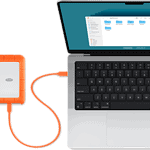An electrocardiogram, often abbreviated as ECG or EKG, is a test that measures the electrical activity of the heartbeat. With each beat, an electrical impulse travels through the heart. This wave causes the muscle to squeeze and pump blood from the heart. A technician attaches electrodes to the skin to measure these impulses. The resulting chart reflects the heart’s activity and can indicate health conditions.
Doctors use the ECG to detect irregular heartbeats, also known as arrhythmias, and diagnose other heart conditions. By looking at an ECG, professionals can determine the rate and regularity of heartbeats, the size and position of the chambers, and the presence of any damage to the heart.
How an ECG Works: A Window Into Your Heart’s Electrical System
An electrocardiogram (ECG or EKG) measures the electrical signals generated by your heart. Every time your heart beats, it produces a tiny electrical impulse that spreads through the heart muscle. Electrodes placed on the skin detect these signals and transmit them to the ECG machine, which records them as a waveform. These waveforms reflect how efficiently your heart is beating and whether its rhythm is steady, fast, slow, or irregular.
Reading the ECG: What the Waveforms Mean
Each heartbeat is represented on the ECG by a series of distinct waves and intervals. Here’s a breakdown of what each part means:
- P wave: This shows atrial depolarization — in other words, the electrical activity that causes the upper chambers (atria) to contract and push blood into the ventricles.
- PR interval: The time it takes for the signal to travel from the atria to the ventricles. If this is too long or too short, it may indicate a conduction problem.
- QRS complex: This spike reflects the depolarization of the ventricles — the big, strong chambers responsible for pumping blood throughout the body.
- ST segment: A flat line between the QRS complex and the T wave. Changes here can suggest a lack of blood flow to the heart, such as during a heart attack.
- T wave: This represents the repolarization of the ventricles — the phase when the heart resets its electrical system in preparation for the next beat.
- QT interval: The total time for the ventricles to contract and then recover. A prolonged QT interval can be a warning sign for dangerous arrhythmias.
Common Conditions an ECG Can Reveal
An ECG provides critical insights into a variety of cardiac issues. While it’s just one piece of the puzzle, it often plays a leading role in the early detection and diagnosis of heart disease. Here are some of the most common uses:
- Arrhythmias: From atrial fibrillation to ventricular tachycardia, ECGs can pinpoint abnormal rhythms that may cause symptoms like palpitations, dizziness, or fainting.
- Heart attacks (myocardial infarctions): ECGs can detect acute heart attacks in real-time or show signs of past ones, often through changes in the ST segment or the appearance of abnormal Q waves.
- Heart block: A delay or interruption in the heart’s electrical system, often reflected in abnormal PR intervals or missing beats.
- Electrolyte imbalances: Potassium and calcium levels directly affect the heart’s electrical activity, and imbalances can alter the ECG pattern.
- Structural abnormalities: Conditions like left ventricular hypertrophy (thickening of the heart muscle) can show up as exaggerated waveforms.
Modern ECG Tools and AI Integration
Thanks to advances in technology, ECG devices are no longer restricted to hospitals. Portable ECG monitors and smartwatches now allow for real-time monitoring of heart rhythms, especially useful for those with chronic conditions. Additionally, AI-powered ECG interpretation is emerging in clinical settings, helping doctors identify subtle patterns that might otherwise be missed. However, these tools are meant to assist — not replace — expert medical judgment.
Improving ECG Interpretation: A Skill Worth Developing
Whether you’re a healthcare provider, student, or simply someone managing a heart condition, learning to understand ECG readings can be incredibly empowering. Familiarity with the waveform patterns and what they represent can help in recognizing when something’s wrong — and when to seek help fast. There are countless resources, including interactive tutorials and case studies, that can sharpen ECG interpretation skills.
Why Early Detection Through ECG Matters
In many heart-related emergencies, time is critical. An ECG provides a fast, non-invasive way to assess the heart’s condition and detect issues that may not be obvious through symptoms alone. By decoding these electrical signals early, doctors can take action before a small problem becomes a major crisis — and in some cases, save a life.
Key Takeaways
- An ECG measures the electrical impulses of the heart.
- It can diagnose a variety of heart conditions.
- Understanding the ECG’s output is important for patient care.
Fundamentals of ECG Interpretation
ECG interpretation is essential for understanding heart function. This section explores the components and methods critical to reading an ECG accurately.
Understanding ECG Components
An ECG records the electrical activity of the heart. Each beat of the heart produces an ECG waveform, which includes parts like the P wave, representing atrial contraction; the QRS complex, illustrating ventricular contraction; and the T wave, signifying the ventricles recovering.
Physiological Basis of ECG
The ECG reflects the physiology of cardiac electrical conduction. The signal starts in the atria, passes through nodes and fibres, triggering the P wave, QRS complex and T wave in a healthy heart.
ECG Lead Placement and Types
Proper placement of ECG leads is vital. Leads are distributed across the chest and limbs, capturing the heart’s electrical activity from different angles. The 12-lead ECG is standard and provides comprehensive data through leads including, V1 to V6, and limb leads I, II, III, aVL, aVF, and aVR.
Cardiac Rhythms and Rates
Cardiac rhythms can be regular or irregular with rates that may be normal, fast (tachycardia), or slow (bradycardia). Normal heart rate is typically 60-100 beats per minute.
The Normal ECG and Variations
A normal ECG has consistent intervals and segment lengths. Some individuals may exhibit benign variations. Others, like athletes, might have different heart rate patterns.
Analyzing Specific Conditions
ECGs can reveal conditions such as atrial fibrillation or flutter, ventricular hypertrophy, and pre-existing damage from a heart attack. Different patterns help identify these conditions.
ECG Indicators of Acute Events
Acute events like chest pain or heart attack show distinct ECG signs. For instance, ST elevation or depression can suggest an acute myocardial infarction (heart attack).
Interpretive Skills and Techniques
Interpreting an ECG involves systematically assessing rhythm, rate, and waveforms. It also entails looking for specific indicators of cardiac events or abnormalities, which aids in diagnosis and treatment planning.







